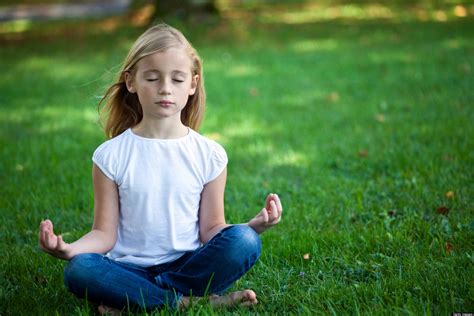Yoga for Kids: Enhancing Calmness and Focus through Movement and Mindfulness
In an increasingly fast-paced world, the need for kids to develop strong mental focus and emotional stability is more important than ever. Yoga, with its blend of physical movement, breathing exercises, and mindfulness techniques, has proven to be a powerful tool in helping children manage stress, improve concentration, and cultivate emotional resilience. This article explores how yoga can help kids stay calm and focused, drawing from historical practices, modern applications, and expert insights.
Introduction
Yoga, traditionally viewed as a spiritual practice, has found new relevance in classrooms, homes, and extracurricular activities for children. Parents and educators are increasingly recognizing the power of yoga to enhance kids’ emotional well-being, physical fitness, and cognitive skills. By practicing yoga, children can cultivate focus, improve their ability to regulate emotions, and handle stress more effectively. In this article, we will dive into how yoga can be adapted for children, why it’s beneficial for their developing minds, and how practical applications in everyday life make a difference.
Key Concepts
- Mindfulness: A state of active, open attention to the present moment, often cultivated through breath control in yoga.
- Focus: The ability to direct attention to a single task or idea without distraction, a key benefit of regular yoga practice.
- Emotional Regulation: The ability to manage and respond to emotions in a healthy, balanced manner, facilitated by the calming techniques in yoga.
- Breath Control (Pranayama): Breathing exercises that are integral to yoga, helping to calm the mind and improve concentration.
- Asanas: Physical postures in yoga designed to increase strength, flexibility, and body awareness.
Historical Context
Yoga has its roots in ancient India, originating more than 5,000 years ago. It was initially developed as a spiritual discipline aimed at uniting the body and mind. In the early 20th century, yoga began to gain popularity in the West, where it was often perceived primarily as a form of physical exercise. However, over the past few decades, the understanding of yoga’s mental health benefits has broadened, with schools and psychologists incorporating it into children’s routines to enhance mental clarity and emotional resilience. The practice of yoga for children is a more recent phenomenon, adapted to meet the developmental needs of young minds while maintaining its traditional goals of achieving balance and harmony.
Current State Analysis
The modern application of yoga for children has surged due to its growing recognition in educational systems and mental health practices. Studies show that children practicing yoga regularly experience decreased levels of anxiety and enhanced cognitive performance. Schools, especially in the U.S. and Europe, have introduced yoga into their curricula as a means to promote focus and reduce behavioral issues. Programs such as MindUP and Yoga Ed. use yoga as a tool for social and emotional learning (SEL), fostering environments where children feel safe to explore their emotions and learn self-regulation techniques.
Practical Applications
Integrating yoga into a child’s daily routine can be simple and effective. Here are some practical ways to apply yoga for calmness and focus:
- Morning Stretch: Beginning the day with a short, gentle yoga session can help wake up the body and focus the mind.
- Breathing Breaks: Incorporating short pranayama exercises during the school day can refresh kids’ minds and increase attention span.
- Mindful Movement: Combining yoga with storytelling or play helps younger children engage more fully while developing mindfulness.
- Evening Wind Down: A calming yoga session before bedtime can aid in relaxation, helping children sleep better and wake up refreshed.
Case Studies
| Case Study | Context | Outcome |
|---|---|---|
| Mindful Schools Program | A U.S.-based school implemented yoga as part of its daily curriculum. | Students showed reduced behavioral problems and increased focus during class. |
| Yoga in Special Education | Yoga was introduced to children with autism to help manage anxiety and emotional dysregulation. | Improved self-soothing techniques, leading to fewer outbursts and better classroom engagement. |
| London Primary School Initiative | Breathing exercises and simple yoga poses were integrated into the school day. | Teachers reported that students were calmer and more attentive after sessions. |
Stakeholder Analysis
Several groups stand to benefit from the integration of yoga into children’s lives:
- Parents: Yoga helps children manage stress at home and develop self-discipline.
- Educators: Yoga improves classroom behavior and fosters a calmer learning environment.
- Health Professionals: Yoga is a non-invasive, holistic approach to improving children’s mental health.
- Children: Kids themselves benefit from improved emotional regulation, focus, and physical health.
Implementation Guidelines
Implementing yoga for children requires a flexible, inclusive approach. Key steps include:
- Adapt Practices: Modify traditional yoga poses and techniques to be engaging and age-appropriate for kids.
- Engage Educators and Parents: Provide training for teachers and parents so that yoga can be practiced both in schools and at home.
- Create a Safe Environment: Ensure that the environment is conducive to yoga, with minimal distractions and supportive instructors.
- Incorporate Mindfulness: Teach children to pair physical poses with mindfulness and breath awareness to maximize focus and emotional benefits.
Ethical Considerations
When introducing yoga to children, it is crucial to respect the cultural origins of the practice while ensuring that it is inclusive for all students. Avoiding any form of spiritual or religious connotation in public school settings can help yoga be accessible to everyone. Additionally, ensuring that yoga practices are free of gender bias or physical expectations is essential, as it promotes body positivity and self-acceptance.
Limitations and Future Research
Although yoga has proven benefits for children, there are some limitations to its current applications. More research is needed to explore long-term effects, particularly on diverse populations and in different cultural settings. Additionally, the effectiveness of yoga may vary depending on the child’s age, personality, and emotional state. Future studies could also investigate how yoga compares with other mindfulness-based practices and how these methods can complement one another.
Expert Commentary
Experts agree that yoga offers a comprehensive approach to improving children’s mental and physical health. Dr. Sarah Thompson, a child psychologist, states, “Incorporating yoga into children’s daily routines can make a significant difference in their ability to focus and regulate emotions. It empowers them with tools they can use throughout their lives.” Similarly, yoga instructors like Jamie Callahan emphasize the importance of making yoga fun and accessible, particularly for younger children: “When yoga is taught as play, children naturally engage with it, and they develop lifelong habits of mindfulness and movement.”








